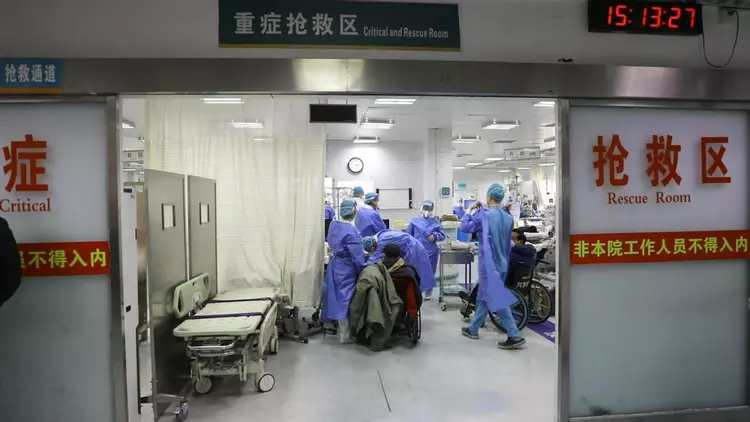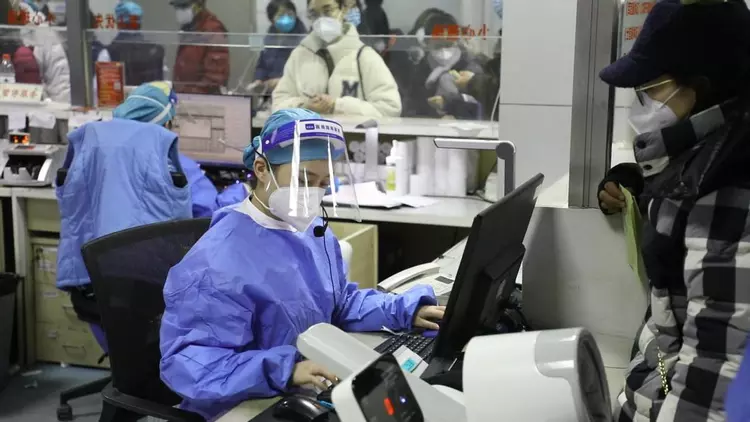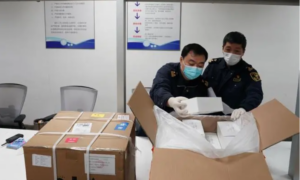
PLA General Hospital emergency director: emergency volume continues to be high, with 50% of critical, emergency and serious patients
“Patient Wang Yang (pseudonym), age 95, positive for new coronary, complex underlying disease, currently vague consciousness with collapsed air ……”
At 3 p.m. on December 26, a life-and-death rescue was being staged in the emergency medicine department of the First Medical Center of the PLA General Hospital. Upon entering the emergency room, Wang Yang was quickly assessed as an acute and critical patient and was pushed into the resuscitation room at the first opportunity.
With the unremitting efforts of Zhu Haiyan and others, the already dying old man was pulled back from the life-and-death line.
On December 28, Zhu Haiyan, director of the emergency medicine department of the PLA General Hospital First Medical Center, said in an interview with the People’s Daily Health Client that such rescues happen every day. Recently, the volume of emergency medicine continues to run at a high level, with the number of visits increasing from 400 or 500 to 700 or 800 per day. Among them, the proportion of critical, emergency and serious patients has also increased, almost reaching 50% already. In order to better ensure the treatment, the hospital has also sent support teams to support the emergency medicine department.
A surge in emergency care, with 50% of critical, emergency and serious patients
“All critical, emergency and serious resuscitation starts from emergency medicine, and if we can’t save them, there is no way to talk about subsequent treatment.” Zhu Haiyan said, “The patients sent to us are basically in critical condition. Like the patient mentioned above, before coming to us, has gone to seven hospitals, all unable to be admitted. We are not only dealing with life, but also snatching people from the hands of King of Hell.”
Due to the surge in emergency care, the medical care in the emergency medicine department is also maintaining a high level of intensity. Within the comprehensive emergency clinic, a doctor’s basic consultation volume reaches nearly 200 people in one shift. According to Zhu Haiyan, “It is not an exaggeration to say that there may be no time to raise one’s head, not to mention eating and going to the toilet.”
In the resuscitation room, the situation is even more tense. There, the time is calculated in seconds. According to Zhu Haiyan, at present, there are about 60 patients a day who need emergency rescue. Ventilator-assisted ventilation, tracheal intubation, advanced life resuscitation, and going on ECMO …… These resuscitation processes are skills that every healthcare professional must master, and they are stories that are played out every moment in the resuscitation room.
However, Zhu Haiyan also mentioned that, to meet the peak of infection, the work undertaken by emergency medicine is heavy, the face of more critical situations, the side also reflects the existing specialist system needs to be further improved. On the one hand, the talent gap is still obvious. On the other hand, the development of information technology and modernization is slow. 120 emergency center still relies on telephone and WeChat to coordinate with each hospital, and the coordination and dispatching occasionally lags and congestion, so we hope to develop emergency medicine and emergency services in the future.

A doctor treating a patient in the emergency medicine department of the PLA General Hospital.
Speeding up, expanding capacity, and achieving the “impossible” in treatment
“Not long ago, our medical care also Yang, but as soon as the fever subsided and the situation eased, we returned to our posts.” Zhu Haiyan introduced, at present, the emergency medicine department 168 medical and nursing have returned to work. In addition, the hospital support for the rescue and treatment forces have also been in place, general surgery, cardiology, endocrinology, digestion, interventional ultrasound, anesthesia and other departments are involved, dynamic supplementation of emergency medicine forces.
It is reported that with the full support of the Party Committee of the PLA General Hospital and the First Medical Center, doctors and nurses have been drawn from various medical departments and divisions for strengthening, and the fever detention area in the old south building, the emergency ward of the Chinese Hospital and the emergency ICU have been opened to significantly increase the number of beds. In addition, the hospital is also pressing ahead with the stockpiling of medical supplies, focusing on the preparation of emergency instruments such as ventilators and ECMO to prepare for the peak of critical illness.
“In terms of specialty admission, we ensure that emergency care is given priority and emergency care is triaged, and in the process of admission of emergency patients, we ensure that critically ill patients in this emergency can be admitted to hospital in the first place.”
According to Zhu Haiyan, at present, the emergency medicine department is divided into red, yellow and green “three zones” in terms of functional structure to ensure timely treatment. Patients in the red zone are acute and critical patients, and are usually resuscitated at the first time after being sent to the hospital; patients in the yellow zone are sub-acute and critical patients, and the waiting time is usually around 30 minutes; patients in the green zone are non-acute patients, and the waiting time is usually around 3 hours.
After the completion of the initial consultation or emergency, the patient baton is also the direction of the hospital’s focus. After the critical, emergency and serious patients have passed the danger period, they will be received by the major departments, and the docking work will usually be completed on the same day to ensure that the patients can be properly treated. It is reported that the hospital requires each department to have no less than 8% of the unfolded beds for critical care monitoring.
In terms of the expert team, the First Medical Center has set up an expert steering group for acute and critical illnesses, which will conduct rounds and review and guide the center’s acute and critical illnesses at 4 p.m. every day to ensure that extremely critical patients are admitted in the specialty without discrimination and to ensure medical quality. The hospital is also continuously strengthening the implementation of core systems such as the first visit responsibility system, tertiary check-ups, death discussions, and consultations for difficult diseases, doing its best to reduce mortality and improve the success rate of treatment.
“What we want to do is to make the impossible possible in life-saving treatment.” According to Zhu Haiyan, the peak of the epidemic is often followed by the arrival of the peak of serious illness. “We have to play with twelve points of spirit, patients put their lives in our hands, we can’t let them down.”

Medical care is busy in the emergency medicine department of the PLA General Hospital.


Average Rating